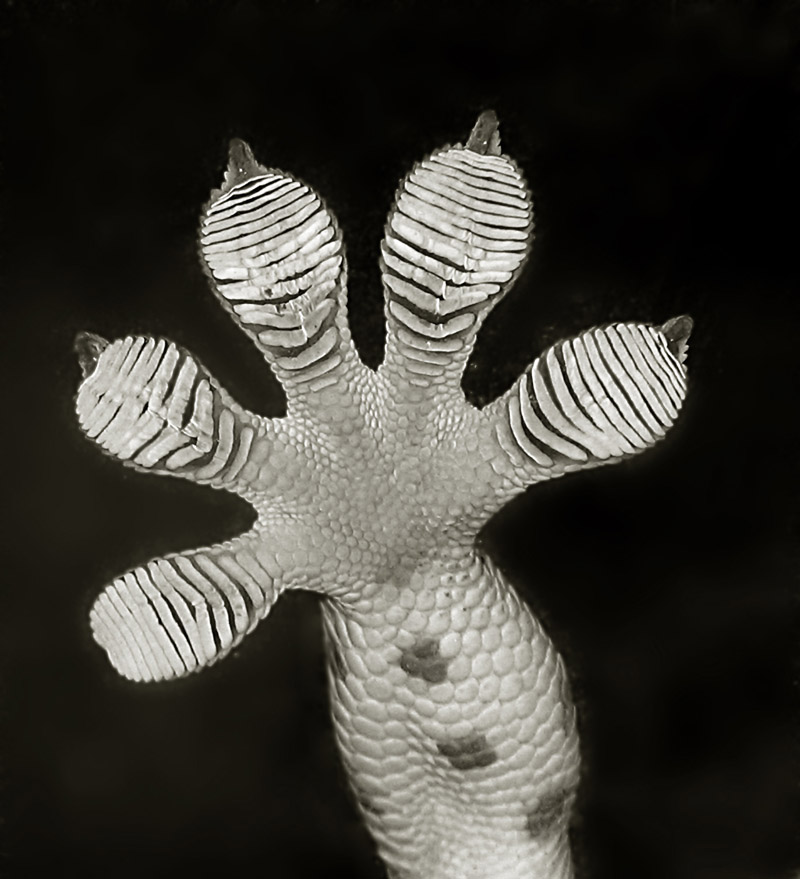US scientists have taken a leaf from the foot of a gecko to develop a self-dissolving surgical glue to replace stitches and staples. The new material consists of a layer of a polymer called PGSA, short for poly(glycerol-co-sebacate-acrylate), coated with a layer of oxidised dextran sugar molecules. The dextran layer, which sticks tightly to the PGSA, can also form chemical groups known as imines when it meets proteins such as on the surfaces of skin cells.
 |
| A Gecko foot, showing the sticky pads which are so inspiring © Shimbathesnake @ WIkipedia |
The team prepared the sticky sheets by painting the chemicals onto the surface of a silicon template, the surface of which was fashioned into a series of tiny thread-like projections resembling the hairs which are found on the foot of a Gecko. This introduced the same pattern of nanoscale pillars into the PGSA which was fixed in shape before use with a blast of UV light.
To test its sticking power the researchers fixed small 4mm discs of the material to glass slides and allowed it to glue itself to a strip of pig intestine, the end of which was fixed to a force-meter. The tension in the strip of tissue was increased until it broke free from the PGSA-glue. The experiments showed that a square centimetre of the material was surprisingly strong and could support a weight equivalent to a small book.
Next, to confirm that the material could be used safely inside the body the team implanted small discs of the material adjacent to the abdominal muscles to mimic how it might be used surgically. Tests showed that the tissue-glue bound itself tightly to the muscle and produced mimimal signs of inflammation.
Another benefit is that the material is self-dissolving, and other molecules such as growth-promoters or antibiotics can be incorporated and slowly released from the matrix to fend off infection and promote healing. The team also suggest that by varying the nano-structure and composition of the material it should be possible to produce variants of the glue with different tissue adhesive properties for different surgical jobs. The discovery, which is published in this week's PNAS, still needs to be evaluated for safety in humans, but if all goes well then it could be coming to a wound near you, soon!










Comments
Add a comment